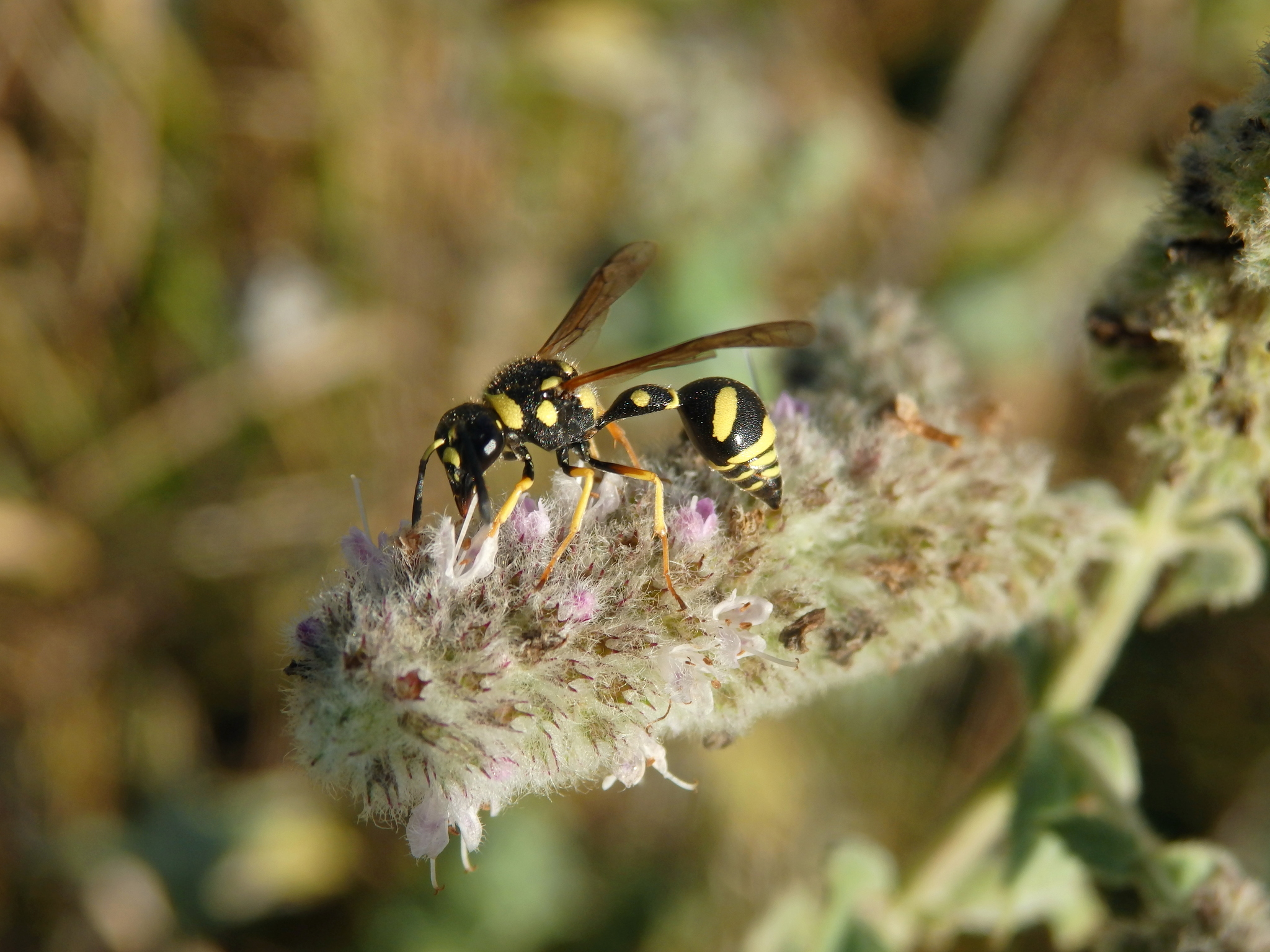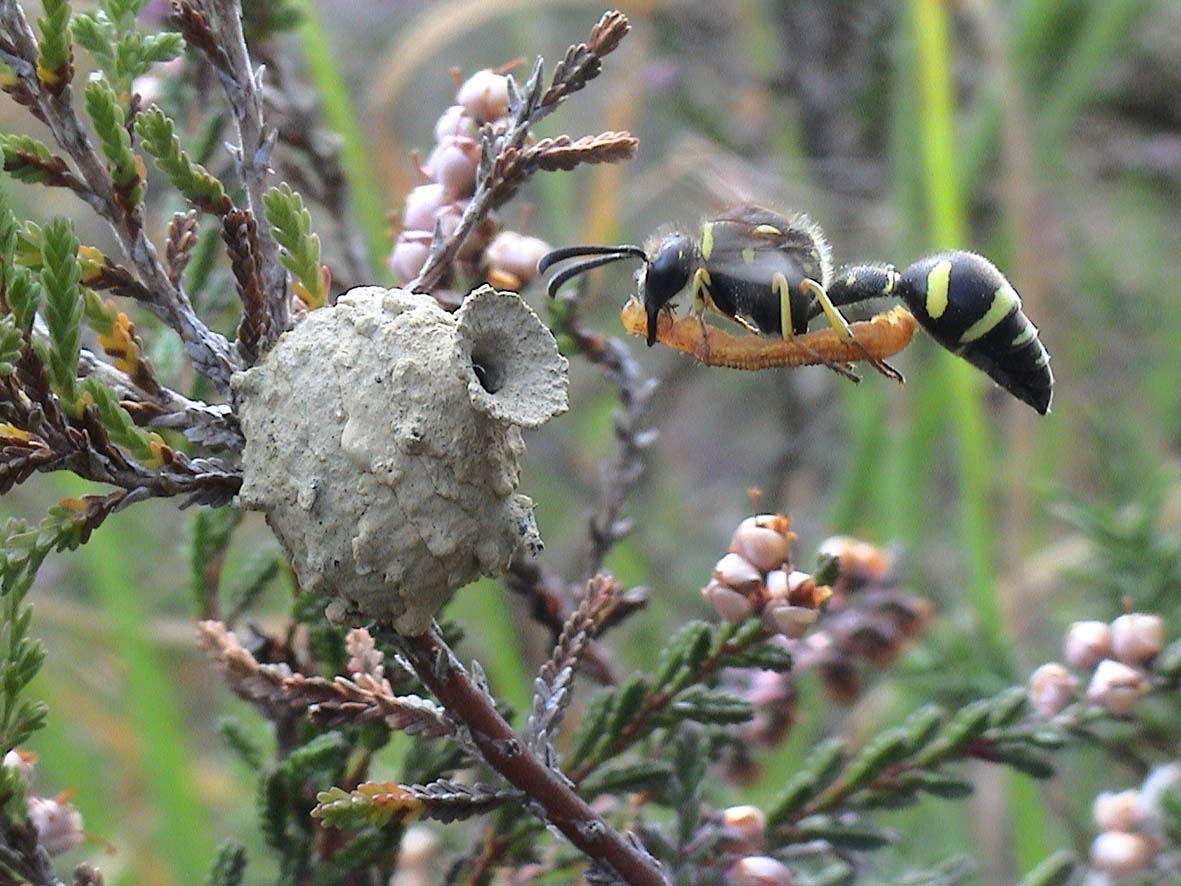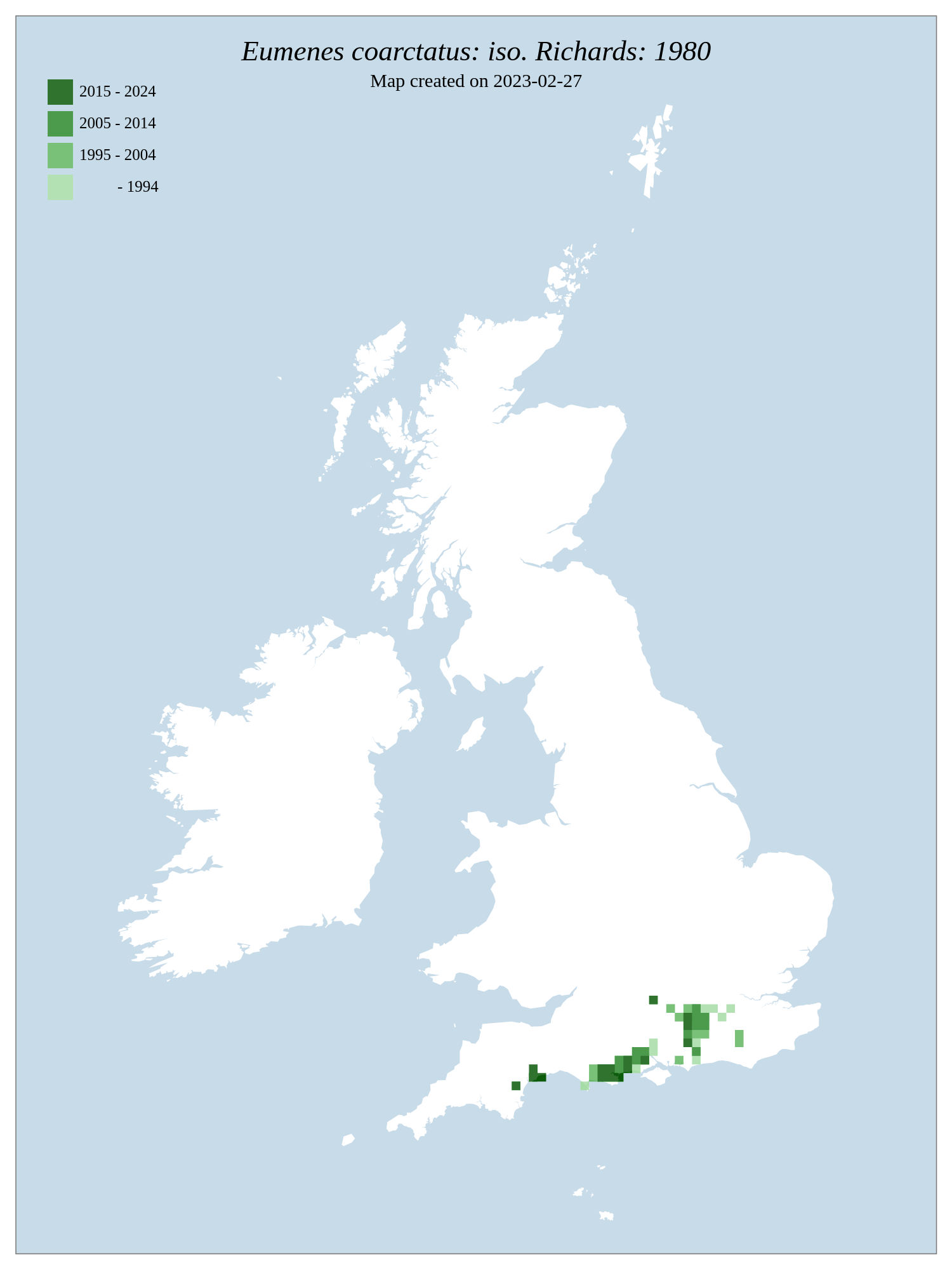Memorable Moments on the Heath 1: Heath Potter Wasp
Welcome to the first in a series, compiled by Warden Mike, featuring members of the Thames Basin Heaths Partnership team recalling memorable moments on the heath.
Warden Mike: Heath Potter Wasp
Throughout 8 years of wardening on the Thames Basin Heaths Special Protection Area I have seen many different wasp species but I have only ever seen one Heath Potter Wasp – at Chobham Common. It is one of our rarest heathland species.
The Heath Potter Wasp is one of the solitary potter wasps (or mason wasps) of which there are 22 UK species. The female of the species builds a nest made of mud for her offspring. It is constructed primarily on heather and gorse, or sometimes on dead grass. You can see by the picture below why the nest is known as a pot (or flask). The pot takes between 1.5–3 hours to build. During her lifetime of 2–3 months a female is capable of building and supplying several dozen pots.
After laying a single egg in the pot, the female wasp hunts in the heather and gorse for small caterpillars which she paralyzes with her sting and carries back to store in the pot – returning with a caterpillar about once an hour. She collects, in total, anything up to several dozen, and when the pot is full she seals the entrance and then flies off to build another one!
The egg hatches after about 3 days and the larva feeds on the caterpillars until, at the end of autumn, it pupates for the winter and emerges as an adult the following summer.

Heath Potter Wasp (credit: macrohunter_ls)

Heath Potter Wasp female carrying prey to her clay nest (credit: John Walters)
As can be seen from the distribution map, the Heath Potter Wasp has a very limited range.

Distribution map (source BWARS)
Mike
Thames Basin Heaths Partnership
